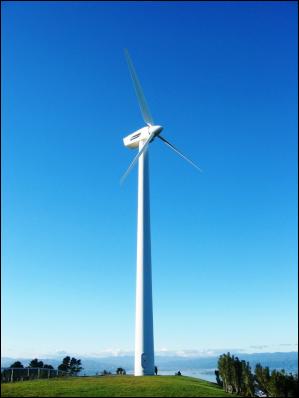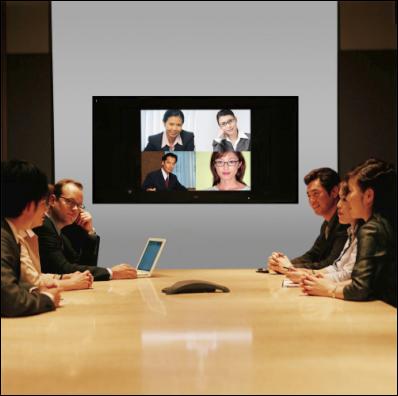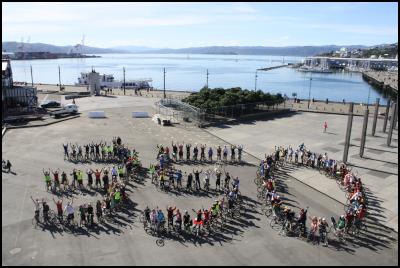Imagining 2020 #1 - The Age Of Smart
The Age Of Smart
Climate Defence Network
About this story…
This story came about because there didn’t seem to be any overall New Zealand plan to reduce our emissions – let alone at the scale and speed needed to do our fair share to avoid global climate tipping points. Yet, as life seems to go on as usual, so many of us are quietly wondering just how serious the climate crisis is and what can we do to look after our families. What we do - who reduces how fast and with how much help - are decisions for all of us. The biggest lesson from the last decade is that we can’t afford any more delay. The future is coming regardless and what we do now can make it brighter and better.
The good news is that we can do our fair share and be better off. We don’t have to shoot cows or crush all our cars. We can act smart and tell our politicians they must too. Our problems in New Zealand aren’t technology or money. The real problems are political will, business-as-usual thinking …and more delay.
‘2020 - The Age of Smart’ is a scenario of the future to get New Zealanders thinking, talking and working out how we create a low emissions country together. Our fair share means halving our current emissions by 2020 (in other words, making a reduction of 40% on 1990 levels) to have a reasonable chance of staying below 2 degrees of warming – and avoiding climate tipping points. Or to put it another way, each person on Earth has just 110 tonnes each of CO2 to emit into the atmosphere before 2050. At New Zealand’s current rates, we will use up our quota by about 2023. The following suggestions may not be the only ideas or possibilities. And we don’t have to pick up all these suggestions – but we do need to agree on a fair way forward to rapidly cut our emissions.
It’s time that scientific necessity shaped political feasibility - and urgently. If climate change is ‘the greatest market failure’, let’s make sure our response is New Zealand’s greatest success - for our environment and for our economy. We can start really reducing our emissions from 2010 - and do our bit to stop global disaster for our families. We must do this – and we can!
2020 ‘The Age of Smart’ coming to our country soon (hopefully)
at home and work...
‘New Zealand’ is synonymous with sustainability. Electricity and heating is now 90% renewable – amongst the best in the world. This global advantage came from encouraging smart behaviour and smart technology. Growing energy efficiency standards helped us avoid becoming the dumping ground for the world’s outdated and expensive-to-run technology. Businesses find that smart energy use frees up investment for business development and innovative New Zealanders are among the world’s top entrepreneurs leading the ‘Low-C’ revolution. Industries have replaced fossil fuels with sustainable biomass energy. Our homes are warmer, drier and healthier. Workplaces are more pleasant too, complemented by home and community-based telecommuting and videoconferencing.
powering our homes and businesses...
Sustainable energy planning and investment has been smart economics. With world oil prices skyrocketing over the last few years, the era of cheap oil is over. Wind energy generation is no longer controversial thanks to better wind turbine design, a greater understanding of the climate crisis, and the regional designation of the most suitable and acceptable areas for turbines.

Photo Credit - © WWF-NZ
The national electricity grid, powered by geothermal, hydro and wind power (with some peak-use gas), is increasingly used for transport, in addition to industry and household energy needs. More homes and businesses feed into the national grid too, thanks to a mix of good policies to help the development of renewable energy technology. Efficient low emission wood-burners teamed up with solar power for heating and hot water are dampening electricity demand peaks. Cities, towns and farms are literally greener with plentiful tree plantings for firewood, food, climate control and biodiversity restoration.
on the move…
Transforming transport has meant better health (especially with the reduced air pollution), well-being and more time together. Neighbourhoods have more ‘heart’ with local shops, services and community workplaces to reduce commuting. Online delivery is smart shopping. Trades-people concentrate call-outs within their local areas, which has cut travel down-time too. Bicycles are popular, but there’s travel gear to suit every need and taste these days. Keeping active and feeling good is such a natural part of everyday life now, rather than an extra to fit into a busy work day or crowded school curriculum. Routine travel to schools and workplaces mostly involves legs or shared transport. New Zealanders are healthier and happier and national health spending is dropping.

Public transport is reliable, fast, frequent, friendly and fun. Places where many people gather - like hospitals, universities, large subdivisions and commercial and industrial areas – link easily into existing public transport and are also serviced by shared transport operators. Most urban centres have free bike schemes and even country towns have community buses and taxis. Care has been taken to nurture rural community facilities and ensure the quality of local schools. A popular business service has been the Auckland-Wellington overnight sleeper train and the new high speed rail link between Auckland and Wellington is almost completed.
Much of long-haul freight transport is by train and coastal shipping. Road maintenance costs have dropped, as well as accident rates. We originally lowered open road speeds to conserve fossil fuel, but community support has kept these lower speeds because road accident rates also plummeted. Fewer vehicles, and 30kph limits for residential and built-up areas, have got rid of traffic congestion and actually sped up travel. Driving practices are much more considerate as drivers are increasingly walkers and cyclists too.
Increasing fuel efficiency standards and policies which decreased reliance on fossil fuels were critical to making transport work. Although our reduced vehicle fleet is increasingly electric now, people are choosing not to bother with the hassles of private car ownership and maintenance. Vehicle share initiatives mean flexibility to choose vehicle size to suit each trip.
The degree of international connectivity through electronic communication (especially in the business sector) means long-haul air travel is unlikely to return to pre-2010 levels. Days of jet-lag and so many hours wasted in air travel are not attractive, compared to the ease and frequency of high-technology video conferencing.

Image used with permission - NZ's i-Start
Aviation and shipping were included in the international emissions reduction treaty, but with the end of cheap oil and accessible high quality video communication demand has considerably decreased. The size and nature of New Zealand tourism has changed considerably with fewer visitors overall, more regional and domestic tourism and longer stays by overseas guests.
on the farm, on the land and beyond…
We’re a proud farming nation in 2020: world-renowned for smart sustainable farming and free of GE contamination. This has re-established our image as ‘clean and green’ which earns a marketing edge with eco-conscious customers. Food footprints and animal welfare standards are credibly documented for ‘100% Pure NZ’ brand integrity.
Our farms lead the world in lowering livestock emissions and smart farming practices. Feed, nutrients, water, soils and stock are managed to increase efficiency and resilience to extreme weather events as well as to reduce emissions. Fast adoption of innovative practices and technologies to achieve this has really paid off - thanks to extensive R&D and close attention to market demands.
New Zealand has a much wider range of produce and animals. The dairying boom for international commodity markets has given way to low emissions high value dairy products and diversifying into protein-rich crops. Diversity means greater resilience in the face of shifting world market prices and changing weather conditions. Much of our export food production is for an increasingly drought-stricken Australia, as well as value-added high quality protein products across the Asia-Pacific region.
New Zealanders have always enjoyed a sense of self sufficiency and more of us are enjoying home and neighbourhood gardens. Aided by the expansion of marine reserves New Zealand’s fish stocks are showing significant signs of recovery from serious overfishing and damaging fishing methods. In future these stocks will be in good shape to continue to feed future generations.
Almost all of New Zealand’s marginal land is in forest. Former degraded pastoral lands are covered by a mix of pine and other exotics, plus regenerating natives. The most inaccessible land and the steepest slopes are reverting to native forest for long term carbon absorption, soil stability and biodiversity, with pest control to protect native planting and restoration. The more degraded marginal areas have been planted with faster growing versatile-use exotic tree species (with invasive species strictly controlled). The forestry setor is booming, with a diverse mix of tree species planted on 8-80 year rotations. Our extensive native forest carbon capture assets are also enhanced by a national programme of pest control. There is strong demand for sustainably harvested wood as a construction material both domestically and internationally over more energy or emissions intensive products. Strategic on-farm planting has helped adaptation to extreme weather events such as flooding and drought.
smart policies, smart investment…
Strategic investment recognised our sustainable strengths and weaknesses in the low-C revolution. We realised business-as-usual plans and increases in fossil-fuel intensive industry such as airports, major roading projects and lignite-to-fertiliser conversion plants were dead ends. Instead, investment focussed on carefully targeted subsidies, grants and education to speed up the transition to sustainability.
Investment in forest planting, pest control, agricultural research, smart farming, fast-access broadband, home insulation, and sustainable transport helped turn around recessionary unemployment from a decade ago. Exposing emissions to market prices using global best practice was an essential building block. A smart mix of policies has also helped divert investment from housing and land speculation, to innovative, sustainable and resilient business. Our skill as innovators coupled with sound policy architecture ensures that we are well placed to seize the emerging opportunities of this global transition. Our 90% renewable electricity makes us the country of choice for trans-Tasman industry.
The government chose 40% of 1990 levels by 2020 as a responsible emissions reduction target so we could do our fair share in global emissions reductions. This target, together with the decision to help developing nations with low emissions development and support for adaptation has been a win-win strategy for us internationally and domestically. Wisely, we chose to invest in preventing runaway climate change and global instability.
Following from the United Kingdom’s 2009 lead, New Zealand has taken a whole-of-government approach to emissions reduction. We have legislated annual targets, departmental emissions budgets, and annual reporting. All Cabinet papers include emissions impact analysis. The independent Climate Policy Agency has a prominent role in policy setting with an overview of mitigation and adaptation planning, and public education.
Economically, New Zealand is in a reasonable position in 2020 with increasing employment, decreasing oil imports, and a manageable balance of payments and overseas debt level.
looking back…
Although plans to halve our emissions by 2020 seemed ambitious back in 2009-2010, we found that by moving quickly in the right direction and by sending accurate price signals, innovation took off. Change was challenging at times, but easier than we first expected. Wisely, we decided to find most of the cuts domestically. Emissions prices have gone through the roof and thankfully, we are a seller in the international emissions trading market.
It’s strange to look back on some of the issues that used to worry us here in New Zealand – like rising unemployment, health sector concerns, our OECD inferiority complex, and competition with Australia. There was even debate in some quarters as to whether the threat of human-induced climate collapse was real! This despite the huge proportion of scientists and international agencies expressing urgent concern. Increased melting of the Greenland ice sheet and Arctic sea ice was definitely ‘the canary in the coal mine’. As we’ve watched the signs of climate change grow in severity and impact around the world, the overall feeling is utter relief that we turned the corner in time - and although there’s a lot of work ahead here and internationally, we can avoid disastrous climate tipping points.
New Zealand’s emissions began to decrease from around 2010. The signs are that we’ll have to keep lowering our emissions through to 2050 to close to zero. Thankfully, the choices we made earlier this decade mean we can do it.
It’s good to enjoy life in 2020 and feel hopeful for our future and our children.

Click for big version
The "Imagining 2020" Series of articles is a creative commons discussion effort coordinated by Scoop.co.nz , Hot-Topic.co.nz and Celsias.co.nz. Contributions are welcome from all comers. Please see the introduction editorial HERE for an explanation of the project and instructions for how to contribute.


 Binoy Kampmark: Fallibility, Dirty Wars And Pope Francis I
Binoy Kampmark: Fallibility, Dirty Wars And Pope Francis I Peter Dunne: Dunne's Weekly - An Issue No-one Can Afford To Lose
Peter Dunne: Dunne's Weekly - An Issue No-one Can Afford To Lose Martin LeFevre - Meditations: Choosing Mass Murder?
Martin LeFevre - Meditations: Choosing Mass Murder? Eugene Doyle: Quiet Mutiny - The U.S. Army Falls Apart
Eugene Doyle: Quiet Mutiny - The U.S. Army Falls Apart Gordon Campbell: Papal Picks, And India As A Defence Ally
Gordon Campbell: Papal Picks, And India As A Defence Ally Binoy Kampmark: The Selling Of America - Ending The US Dollar’s Exorbitant Privilege
Binoy Kampmark: The Selling Of America - Ending The US Dollar’s Exorbitant Privilege